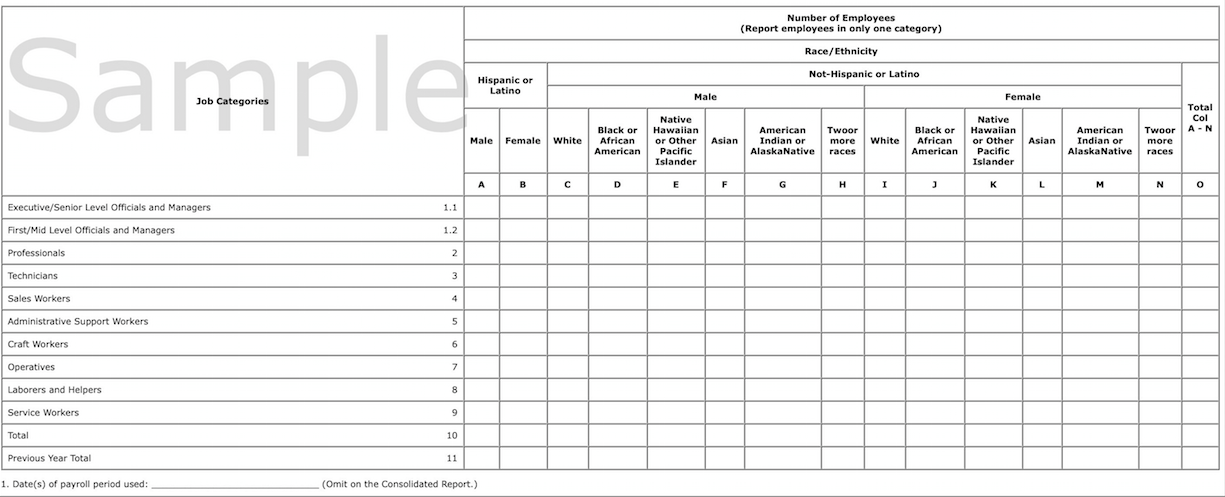Under normal circumstances, employers would’ve been required to file their EEO-1 reports by March 31, 2020. But so far, 2020 has proven to be anything but normal. Since the pandemic has upended day-to-day operations for many employers, the Equal Employment Opportunity Commission (EEOC) will not require employers to file their 2019 EEO-1 reports this year. Instead, the agency will begin collecting reports through its online portal for both 2019 and 2020 in March of 2021. As soon as they’re available, the EEOC will post the portal’s precise opening date and filing deadline on its home page and send a notification letter to eligible EEO-1 filers.
This latest update comes after years of EEO-1 data requirement changes, which can make it hard for anyone to keep up. But not to worry. Today we’re answering the most important questions about the EEO-1 and the recent changes. Let’s dive in — starting back at square one.
What is the EEO-1 report?
The EEO-1 report is an annual government survey that’s used to collect workforce data. The EEOC and other federal agencies use the collected data to support civil rights enforcement and analyze employment patterns, such as the representation of women and minorities in organizations, industries and regions.
Who is required to file the EEO-1 report?
All US employers with establishments located in any of the 50 states or the District of Columbia are legally required to file the EEO-1 report if they meet any of the following criteria:
How should employees be counted for the EEO-1 report?
Companies with centralized ownership, control or management should count employees across all of their organizations to determine if they meet the 50 or 100 employee thresholds. Organizations should also err on the side of caution when counting employees. For example, if an employer has met the 50 or 100 employee threshold at some point during the year (and not at other points in the year), they should either file their EEO-1 report or seek legal guidance regarding compliance. For more information, employers can check out the FAQs posted by the EEOC.
What information is collected in the EEO-1 report?
The EEO-1 report is not new — it dates all the way back to 1966. However, it’s undergone a few changes over the years. Most recently, the EEOC squashed the requirement for Component 2 pay data, and will go back to only collecting Component 1 data.
Component 1 requires that employers report the number of employees (headcount) who work for the business, organized by job category, race/ethnicity and sex. This is the data that qualifying employers are already used to providing. Below is a sample of what the Component 1 data report looks like.
Since there’s no EEO-1 data collection this year, is there anything I need to do?
Despite the fact that employers are no longer required to file their reports this year, the EEOC recommends that covered employers begin preparing their data for next year (if they haven’t already started). While the deadline has changed, the reporting period — which is any payroll period from October through December — has not. As such, employers should complete preparation of their 2019 EEO-1 reports ahead of time. By doing so, they’ll have more time to prepare their 2020 EEO-1 reports when year’s end rolls around.
Is the required EEO-1 data available in Orbit Solutions?
As always, Payroll Data clients that use our Orbit Human Resources product can use the EEO-1 report for the 2019 and 2020 Component 1 data that will be required next year. If you’re interested in learning more about Orbit Human Resources check out our product overview sheet or reach out with questions!







